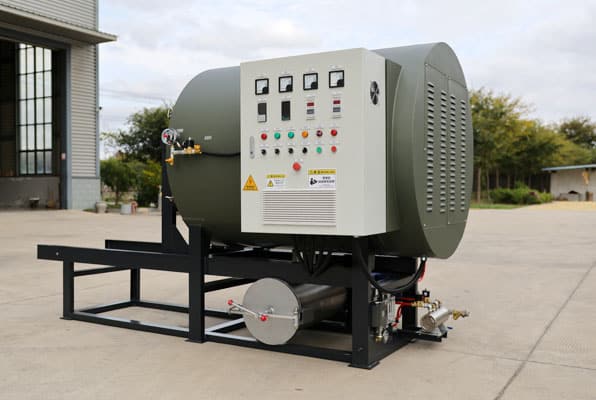Introducción
In industries that deal with metal parts, precision components, and automotive manufacturing, contamination removal is a critical process. Traditional cleaning methods often fall short in removing stubborn oils, greases, and polymers. This is where a pyrolysis oven comes into play—a high-efficiency, eco-friendly solution for industrial cleaning and degreasing.
In this blog, we’ll explore:
✔ What a pyrolysis oven is and how it works
✔ Key benefits over traditional cleaning methods
✔ Industries that benefit from pyrolysis ovens
✔ How to choose the right pyrolysis oven for your needs
What is a Pyrolysis Oven?
A pyrolysis oven (also called a vacuum pyrolysis oven or thermal cleaning furnace) is an industrial heating system that uses high temperatures in a low-oxygen environment to break down oils, lubricants, waxes, and other organic contaminants into harmless gases and ash.
How Does It Work?
- Loading – Contaminated parts are placed inside the oven.
- Heating – The oven heats up (typically 300°C to 600°C) in a vacuum or nitrogen-rich atmosphere to prevent combustion.
- Pyrolysis – Organic residues decompose into volatile gases, leaving behind only a fine ash.
- Cooling & Disposal – The gases are filtered or condensed, and the cleaned parts are ready for further processing.
Key Benefits of Pyrolysis Ovens
✅ Eco-Friendly – No harmful chemicals or solvents are used; reduces hazardous waste.
✅ Deep Cleaning – Removes even the toughest residues from complex geometries.
✅ Energy Efficient – Lower operating costs compared to chemical or ultrasonic cleaning.
✅ Safe & Automated – Minimizes worker exposure to toxic fumes.
✅ Versatile – Works for metals, ceramics, and some plastics.
✅ Textile Fiber Industry – Used for cleaning polymer residues from spinnerets, screws, and other components.
Industries That Use Pyrolysis Ovens
Pyrolysis ovens are widely used in industries requiring ultra-clean components:
🔹 Automotive – Cleaning engine parts, gears, and transmission components.
🔹 Aerospace – Removing coatings and contaminants from turbine blades.
🔹 Medical & Dental – Sterilizing surgical tools and implants.
🔹 3D Printing – Post-processing metal and polymer parts.
🔹 Electronics – Degreasing precision machinery and circuit boards.
Choosing the Right Pyrolysis Oven
When selecting a pyrolysis oven, consider:
🔸 Temperatura – Higher temps (500°C+) for heavy contaminants.
🔸 Chamber Size – Match it to your part dimensions.
🔸 Atmosphere Control – Vacuum vs. nitrogen for different materials.
🔸 Automation Level – Batch vs. continuous processing.
🔸 After-Sales Support – Maintenance and spare parts availability.
Conclusión
A pyrolysis oven is a game-changer for industries needing fast, efficient, and eco-friendly part cleaning. Whether you’re in automotive, aerospace, or additive manufacturing, investing in a high-quality pyrolysis oven can reduce waste, improve efficiency, and enhance product quality.
Looking for a reliable pyrolysis oven supplier? Contact us today for expert recommendations!

